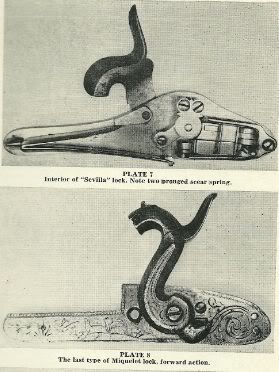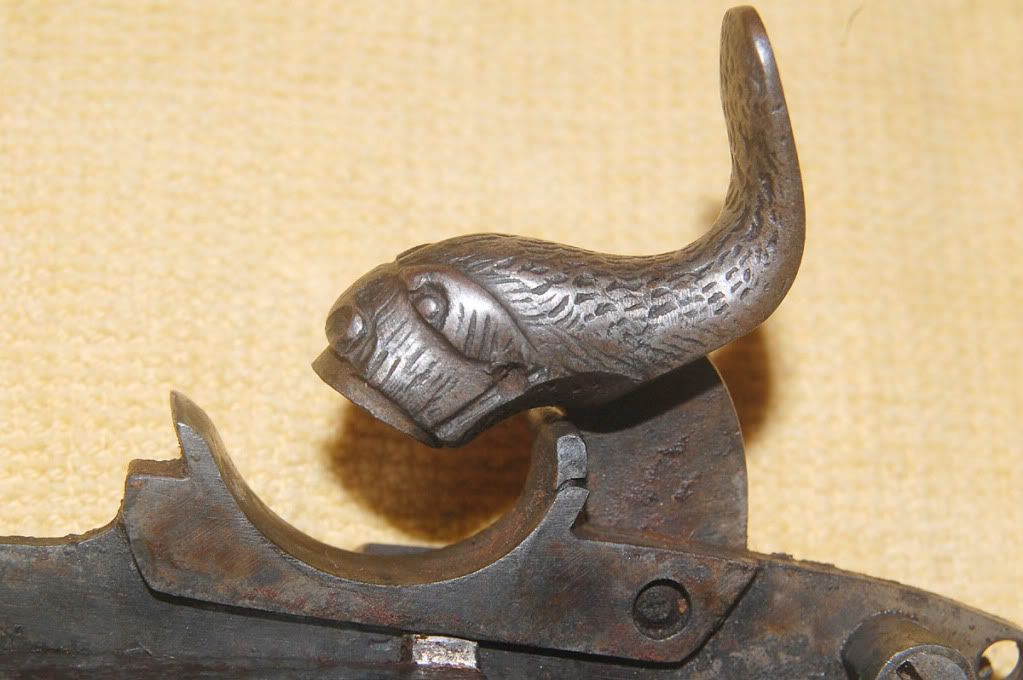I'm looking for information on this lock and the pistol it's on. It has a sear arrangement like that on a snaphaunce, but has two sears which provide both half-cock and full-cock positions.

Hammer down:

On half cock:

On full cock"

I'll post again with pictures of the lock mechanism.
I've run this pistol by the board a few months ago, but maybe there are some new heads, now, or some new ideas in an old head. :grin:
Spence

Hammer down:

On half cock:

On full cock"

I'll post again with pictures of the lock mechanism.
I've run this pistol by the board a few months ago, but maybe there are some new heads, now, or some new ideas in an old head. :grin:
Spence












